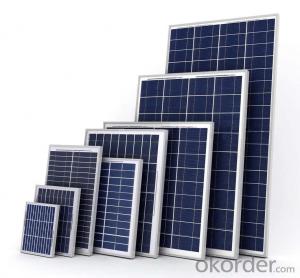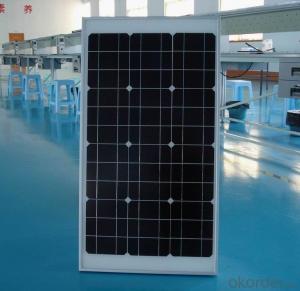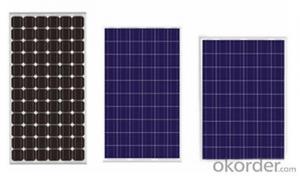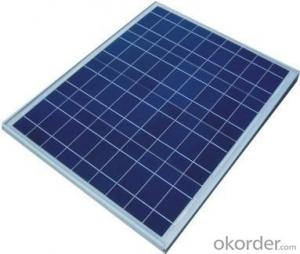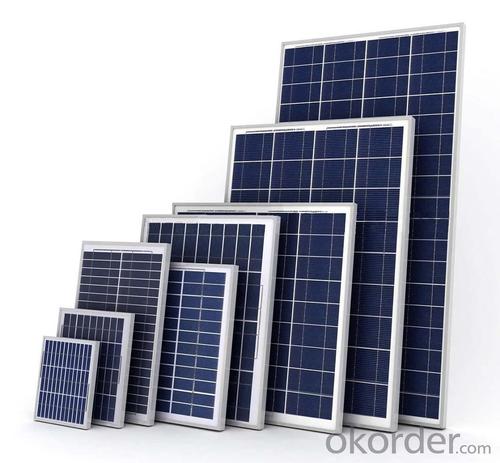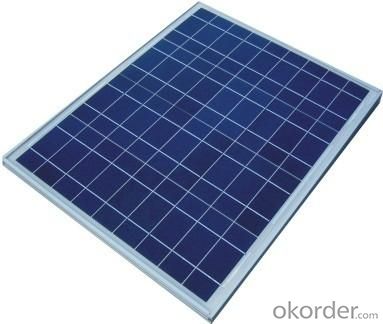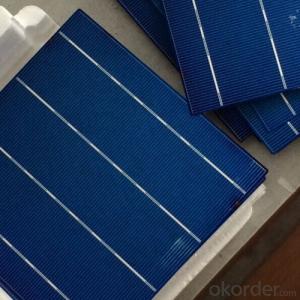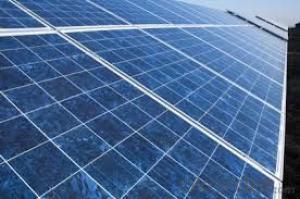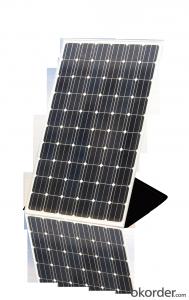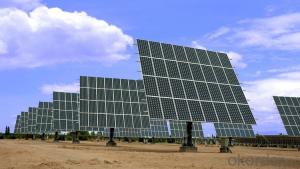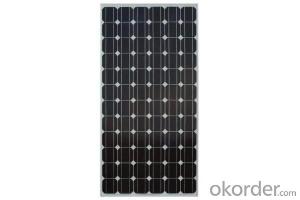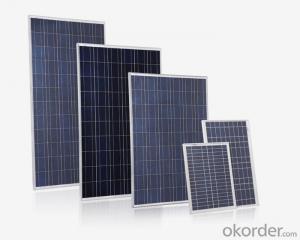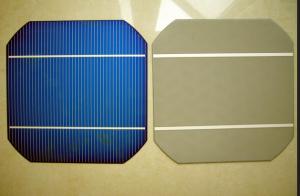Solland Solar Cells Favorites Compare Top High Efficiency Mono Perlight Solar Panel 280W
- Loading Port:
- China Main Port
- Payment Terms:
- TT OR LC
- Min Order Qty:
- -
- Supply Capability:
- 10000000000000 watt/month
OKorder Service Pledge
Quality Product, Order Online Tracking, Timely Delivery
OKorder Financial Service
Credit Rating, Credit Services, Credit Purchasing
You Might Also Like
Quick Details
| Place of Origin: | Guangdong China (Mainland) | Brand Name: | sunshine | Model Number: | sy-280p |
| Material: | Polycrystalline Silicon | Size: | 1960*980*40mm | Number of Cells: | 72PCS |
| Max. Power: | 280W | VOC: | 36V |
Packaging & Delivery
| Packaging Detail: | Crate |
| Delivery Detail: | 30 |
Specifications
1, A grade solar cell
2,Life of 20-35 years
3,Super quality competitve price
4,International Standard
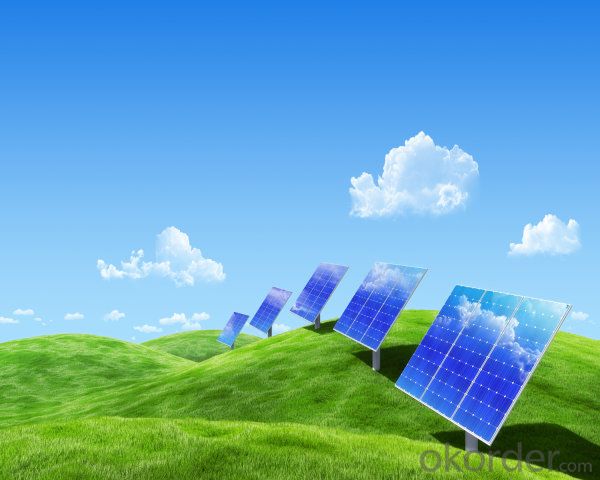
solar panels 280W poly Specification
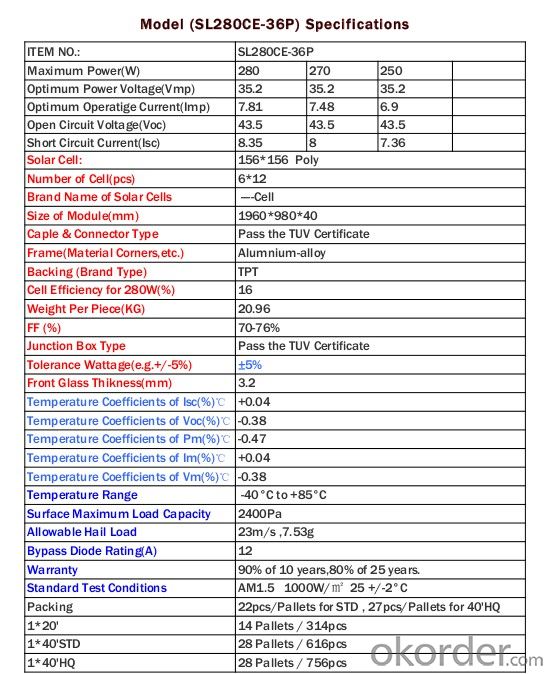
- Q: How many solar cells are there in a solar panel?
- 20?
- Q: Can solar cells be used for powering streetlights?
- Yes, solar cells can be used for powering streetlights. Solar-powered streetlights use photovoltaic panels to convert sunlight into electricity, which is then stored in batteries for use during the night. This sustainable and renewable energy source eliminates the need for traditional grid electricity, reducing costs and environmental impact.
- Q: How do solar cells perform in high altitude environments?
- Solar cells perform well in high altitude environments due to several factors. Firstly, at higher altitudes, there is less atmospheric interference, which means that solar cells receive more direct sunlight and can generate more electricity. Additionally, the colder temperatures at high altitudes can improve the efficiency of solar cells, as they operate more efficiently at lower temperatures. Furthermore, in regions with high altitude, there is often less cloud cover and air pollution, allowing solar cells to receive even more sunlight and operate at maximum capacity. Overall, solar cells are highly suitable for high altitude environments and can provide efficient and reliable renewable energy generation.
- Q: How much does a solar cell weigh?
- The weight of a solar cell can vary depending on its size and type, but on average, a standard-sized solar cell weighs around 6 ounces or 170 grams.
- Q: How big are solar cells?
- Solar cells vary in size depending on their application. They can range from small cells measuring a few centimeters in width and length, commonly used in portable electronics, to larger panels that can be several meters in width and length, used in residential or commercial installations.
- Q: Can solar cells be used in transportation?
- Yes, solar cells can be used in transportation. Solar-powered vehicles and boats have been developed, and solar cells can be used to power various components in electric vehicles such as charging stations, auxiliary systems, and even directly powering the vehicle itself. However, the efficiency and cost of solar cells still pose challenges for widespread adoption in transportation.
- Q: What are the advantages of monocrystalline silicon and polycrystalline silicon in solar power?
- polysilicon, ribbon silicon, thin film materials (including microcrystalline silicon-based film, compound-based film and dye film). From the industrial development point of view, the focus from the single crystal to the direction of the development of polysilicon and film, the main reason: [1] solar head can supply more and less head and tail; [2] for solar cells, (3 hours) The production process of polysilicon is progressing continuously. The automatic casting furnace can produce more than 200 kilograms of ingot per production cycle (50 hours),
- Q: Can solar cells be used for powering disaster relief operations?
- Yes, solar cells can be used for powering disaster relief operations. Solar cells are a reliable and sustainable source of energy that can be used to generate electricity in areas affected by natural disasters. They can power essential equipment and devices such as communication systems, medical devices, lighting, and water purification systems, providing crucial support to disaster-stricken areas where traditional power sources may be disrupted or unavailable. Additionally, solar cells are portable and can be easily deployed in remote or inaccessible locations, making them an ideal solution for powering disaster relief operations.
- Q: What is the role of charge controllers in solar cell systems?
- The role of charge controllers in solar cell systems is to regulate and manage the flow of electricity between the solar panels and the batteries. They prevent overcharging and deep discharge of the batteries, ensuring their longevity and maximizing their efficiency. Additionally, charge controllers protect the solar panels from damage caused by excessive voltage or current.
- Q: How much land is required to install solar cells?
- The amount of land required to install solar cells varies depending on various factors such as the type and efficiency of the solar panels, the amount of electricity desired, and local conditions. On average, it is estimated that 1 megawatt (MW) of solar power requires approximately 5-10 acres of land. However, advancements in solar technology have led to the development of more efficient panels, reducing the land footprint needed for installation. Additionally, innovative approaches like rooftop solar panels can utilize existing structures, minimizing the need for additional land.
Send your message to us
Solland Solar Cells Favorites Compare Top High Efficiency Mono Perlight Solar Panel 280W
- Loading Port:
- China Main Port
- Payment Terms:
- TT OR LC
- Min Order Qty:
- -
- Supply Capability:
- 10000000000000 watt/month
OKorder Service Pledge
Quality Product, Order Online Tracking, Timely Delivery
OKorder Financial Service
Credit Rating, Credit Services, Credit Purchasing
Similar products
Hot products
Hot Searches
Related keywords
